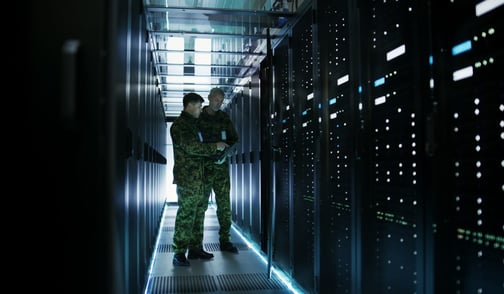When discussing ransomware, the conversation too often centers around the aftermath—the encrypted files, the ransom notes, the panic. Focusing only on these visible effects is like diagnosing a fever without considering the underlying infection. In cybersecurity, understanding the difference between a symptom and a problem is critical to building a sound defense and resilient infrastructure.
Encryption is a Symptom, Not the Problem
The moment your data becomes unreadable, it's clear something is wrong.
- Files are renamed
- Access is denied
- A ransom note demands payment in Bitcoin...
But by the time these warning signs appear, the real damage has already been done.
Encryption isn't the beginning of a ransomware attack—it's the final act.
Ransomware doesn't just "happen." For files to be encrypted, malicious code must have already been added to your system and successfully run. This execution, not the encryption, is the actual problem. It's the moment the attacker crosses from being a passive threat to an active one.
The Real Threat: Unauthorized Software Executing in Your Environment
In almost every ransomware incident, a new piece of software is introduced into the environment, whether through a phishing email, a compromised remote desktop connection, or an exploited vulnerability. This software is then executed, often undetected, giving it free rein to traverse networks, exfiltrate data, and encrypt systems.
This initial event is the real point of failure. It's where defenses break down and attackers gain a foothold.
By focusing on this stage, identifying what was added, how it got there, and how it was allowed to run, organizations can move from reactive to proactive security.
Why This Distinction Matters
Many organizations invest heavily in backup solutions, incident response playbooks, and decryption services. All of these tools address the symptom. Unless you're stopping the addition and execution of unauthorized or untrusted software, you're not addressing the problem.
Security strategies should prioritize controls that:
- Implement unauthorized software detection to catch threats the moment they enter your environment
- Monitor integrity and system changes in real time
- Prevent untrusted executables from running
- Enforce strict allowlisting and least privilege access
These are the actions that stop ransomware attacks before they ever reach the encryption phase.
Tackling the Problem and the Symptom
This is where CimTrak makes a critical difference.
1. Addressing the Problem: Real-Time Detection and Prevention
CimTrak is one of the leading integrity monitoring and system hardening tools that lets you see exactly when something new is introduced or altered on your systems. More importantly, it gives you control to prevent unauthorized changes (anything added, modified, or deleted) before they're executed.
- Real-time change detection: If a new file (like ransomware) is dropped into a monitored location, CimTrak detects it instantly.
- Execution control: It can alert or even block the execution of unauthorized software, effectively removing ransomware before it encrypts a single file.
- Audit trails and forensic data: CimTrak logs every change, including who made it, when, and how, enabling rapid incident response and root-cause analysis.
CimTrak helps solve the actual problem—the unapproved introduction and execution of malicious software.
2. Addressing the Symptom: Rapid Response and Roll-back
Even if ransomware slips through and files are encrypted, CimTrak can still help mitigate the impact:
- File state restoration: CimTrak allows you to roll back unauthorized changes (including encrypted files) from a known good state, significantly reducing downtime.
- Immutable logs: You'll have a reliable forensic record, even if the ransomware attempts to cover its tracks.
While other tools scramble to clean up the aftermath, CimTrak can help you reverse the damage and restore integrity faster and more confidently.
Treat the Problem, Not Just the Symptoms
Ransomware is a process, not an event. Encryption is just the symptom. The real problem occurs when your defenses allow malicious code to be added and executed.
CimTrak gives you the visibility and control to stop ransomware before it starts, and the roll-back power to recover if it slips through. It's a solution that addresses both sides of the equation—the cause and the effect—helping you build resilient, Zero Trust ransomware protection that stops threats before they cause damage.
Ready to stop ransomware at the source? Discover how CimTrak protects your infrastructure from unauthorized changes and malicious execution. Get the details in just 15 minutes.
Tags:
Ransomware
May 20, 2025



